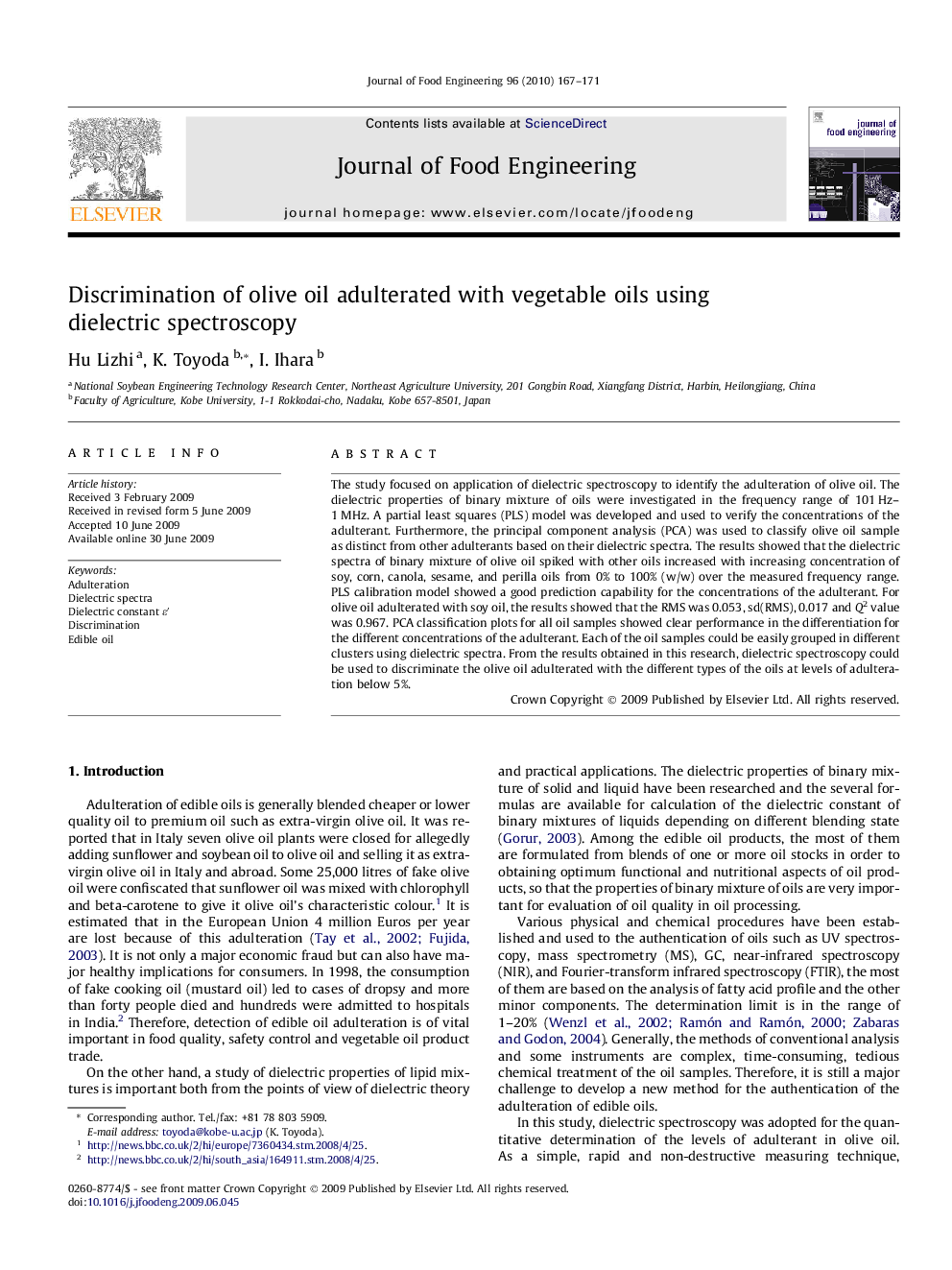| Article ID | Journal | Published Year | Pages | File Type |
|---|---|---|---|---|
| 224340 | Journal of Food Engineering | 2010 | 5 Pages |
The study focused on application of dielectric spectroscopy to identify the adulteration of olive oil. The dielectric properties of binary mixture of oils were investigated in the frequency range of 101 Hz–1 MHz. A partial least squares (PLS) model was developed and used to verify the concentrations of the adulterant. Furthermore, the principal component analysis (PCA) was used to classify olive oil sample as distinct from other adulterants based on their dielectric spectra. The results showed that the dielectric spectra of binary mixture of olive oil spiked with other oils increased with increasing concentration of soy, corn, canola, sesame, and perilla oils from 0% to 100% (w/w) over the measured frequency range. PLS calibration model showed a good prediction capability for the concentrations of the adulterant. For olive oil adulterated with soy oil, the results showed that the RMS was 0.053, sd(RMS), 0.017 and Q2 value was 0.967. PCA classification plots for all oil samples showed clear performance in the differentiation for the different concentrations of the adulterant. Each of the oil samples could be easily grouped in different clusters using dielectric spectra. From the results obtained in this research, dielectric spectroscopy could be used to discriminate the olive oil adulterated with the different types of the oils at levels of adulteration below 5%.
